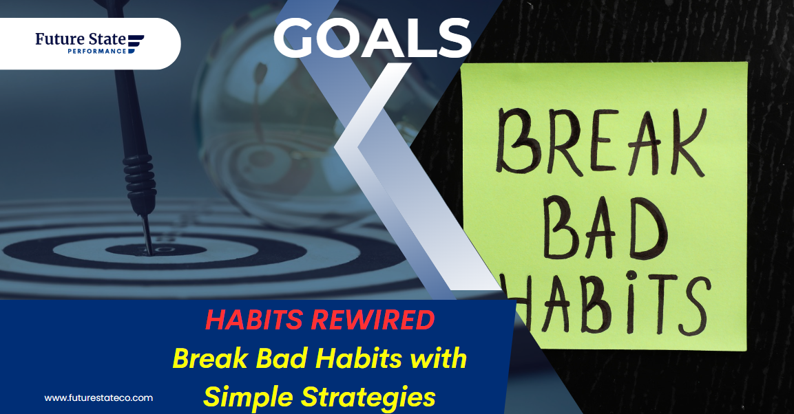Goals
HABITS REWIRED
By Shay Lynch
July 13, 2024
Last week, we discussed the science of habit formation and consolidation. Now, let’s focus on breaking bad habits. We all have them, and the goal is to control or eliminate them entirely.
To break bad habits, you must first become aware of them.
Often, we aren’t conscious of our habits, and it takes some introspection to recognize them. Awareness is the first step toward change. Once you are aware, you can start influencing your behaviours.
⛔️Identifying Bad Habits
Bad habits can range from obvious ones like smoking, excessive alcohol consumption, overeating, and lack of exercise to less obvious ones like procrastination, negative self-talk, over-committing, interrupting others, excessive social media use, and impulse spending.
These habits might seem like they are just part of you, but they are behaviours that can be changed.
Understanding habit formation can help us reverse the process. Neuroplasticity—the brain’s ability to form and reorganise synaptic connections—plays a crucial role. The less you engage in a behaviour and the less you aim to engage your neurotransmitters, the weaker those synapses get.
Strategies to Break Bad Habits
⏩Identify the Cue:
Recognize what triggers your bad habit. For example, seeing junk food might trigger the desire to eat it.
⏩Change the Routine:
Replace the bad habit with a healthier alternative. Instead of eating junk food, have a healthy snack like homemade protein bars or fruit.
⏩Make it Invisible:
Remove the triggers. Don’t keep junk food in the house. Out of sight, out of mind.
⏩Make it Unattractive:
List reasons why the bad habit is harmful. Use strong, resonant language to reinforce why you want to avoid it.
⏩Make it Difficult:
Create friction. If you have to go to the store to buy junk food, you’re less likely to indulge. Increase the effort required to engage in the bad habit.
⏩Replace with Positive Habits:
Use the same cue to trigger a different, positive action. If you usually eat junk food when stressed, try going for a walk or calling a friend instead.
Practical Example: Reducing Junk Food Intake
✅Cue: Seeing junk food.
✅Routine Change: Replace with a healthy snack you enjoy.
✅Make it Invisible: Don’t buy junk food.
✅Make it Unattractive: Write down the negative health impacts of junk food.
✅Make it Difficult: Having to go to the shop creates friction.
✅Positive Replacement: When prompted, go for a walk or have a healthy snack instead.
Awareness is key. Once you are aware of your bad habits, you can begin to change them using these strategies. Remember, this is a gradual process. Take it step by step, and don’t be discouraged by setbacks. You are building a better version of yourself, one habit at a time.
________________________________________
⏩ Join the Conversation – How do you recognise and celebrate your milestones? 🔔 Hit the notification icon to get notified of new content 🔁 If this resonates, feel free to repost
________________________________________
#futurestateacademy #systemsthinking #BreakingBadHabits #HabitFormation #Neuroscience #PersonalDevelopment #SelfImprovement #MindsetMatters #PositiveChange #HealthyLiving #BehaviourChange #SuccessHabits


